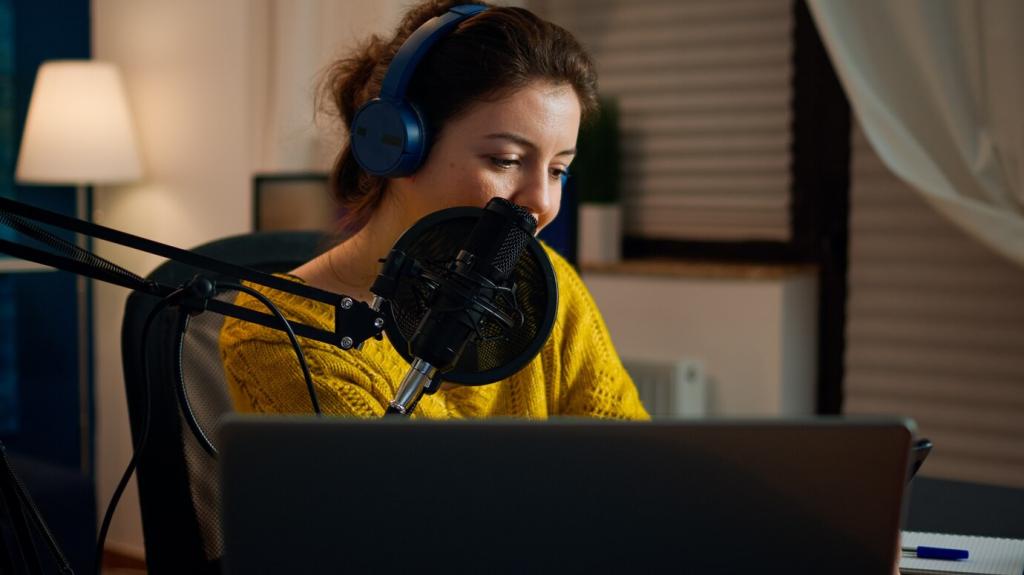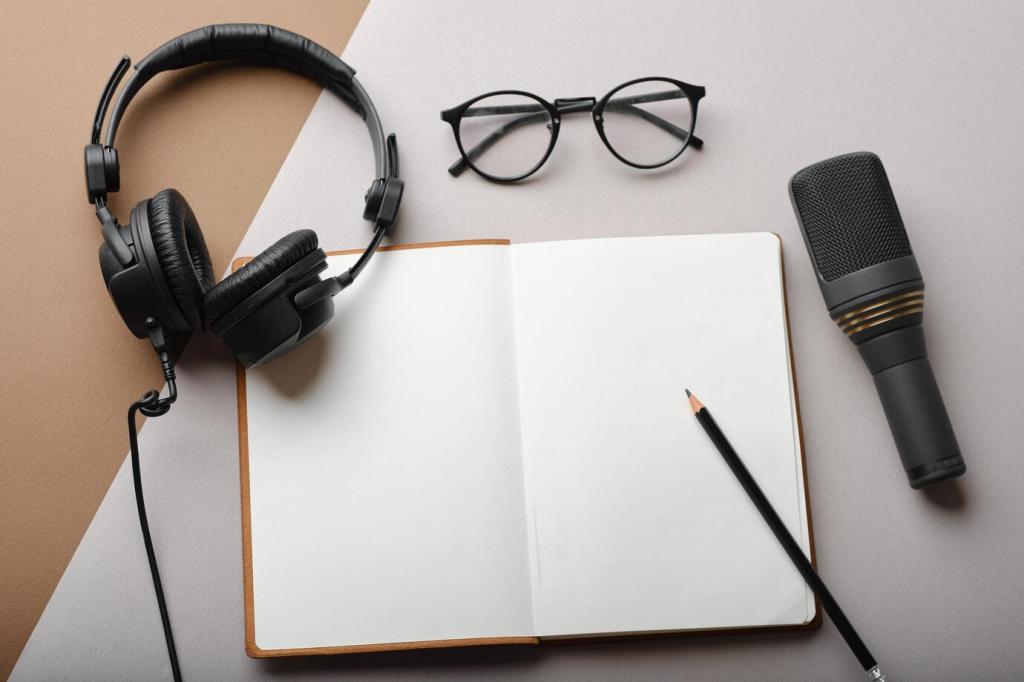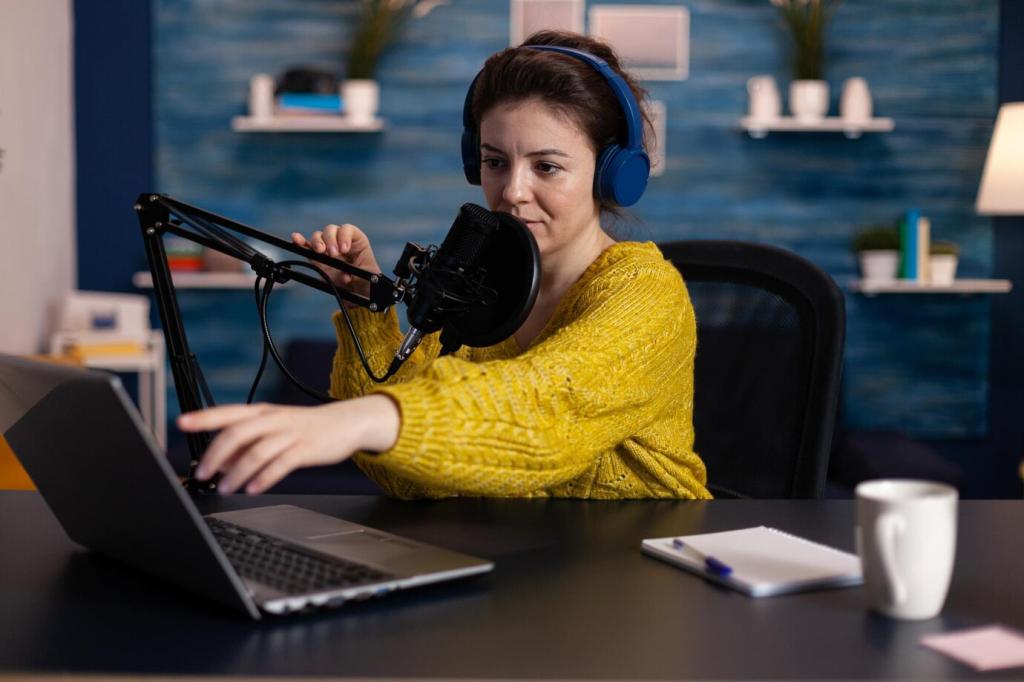Crafting Reality: Sound Design Techniques for Non-Fiction Podcasts
Chosen theme: Sound Design Techniques for Non-Fiction Podcasts. Step into a world where clarity, texture, and honesty shape unforgettable stories. This home page gathers practical methods, lived experience, and ear-trained intuition to help you design sound that makes true narratives feel alive. Subscribe and join the conversation about what truth should sound like.
Principles of Authenticity in Non-Fiction Soundscapes
Truthful ambience versus melodrama
Non-fiction thrives when ambience complements, not competes. A gentle café murmur can signal place without pushing emotion. Resist cinematic swells that overwrite nuance; instead, let subtle textures breathe. Share your threshold: when does enhancement become manipulation in your own sessions?
Establishing a sonic point-of-view
Choose what the listener hears as carefully as a cinematographer selects a lens. Is the mic close, intimate, confessional—or wider, observational, contextual? Define this perspective early, then maintain consistency so the audience understands where they are, and why they are hearing it that way.
Ethical edits and transparency cues
Crossfades can smooth time jumps, but non-fiction demands signals. Consider a soft sting or room tone shift to mark elisions. Brief host narration can disclose compression of time or composite scenes, preserving trust while delivering pace. How do you mark edits without breaking immersion?
Recording Foundations: Voices, Rooms, and Real-World Ambience
For non-fiction interviews, a dynamic cardioid like the RE20 or SM7B tames untreated rooms, while a good small-diaphragm condenser can sparkle in controlled spaces. Angle off-axis for plosives, monitor proximity effect, and always record a safety track. What mics earn your trust under pressure?
Editing and Cleanup Without Erasing Humanity
Noise reduction that respects breath and texture
Apply broadband reduction conservatively to avoid watery artifacts. Tackle hums with narrow notches at 50 or 60 Hz and harmonics first. Spectral repair works wonders on sirens or coughs, but protect sibilance and consonant edges. When in doubt, reduce a little less and preserve humanity.
Dialogue EQ and dynamics
Start corrective EQ with gentle high-pass filtering around 70–90 Hz. Brighten intelligibility near 3–5 kHz, and tame harshness around 2–4 kHz when needed. Use light compression—2:1 or 3:1—with slow attack to keep transients alive. Sidechain duck music subtly, not aggressively, for respectful clarity.
Pacing, gaps, and purposeful silence
Silence can be narrative. Preserve reflective pauses that carry meaning; shorten only redundant hesitations. Build pacing beats into your edit map, then A/B for emotional flow. Tell us: which episode taught you the difference between empty dead air and a deliberate, moving silence?

Music and Motifs: Supporting, Not Swaying
01
Select sparse instrumentation that complements the narrative register. A restrained piano motif, a brushed snare, or discreet synth pad can suggest mood without verdict. Test with and without music; if meaning collapses without it, your score might be telling the story instead of supporting it.
02
Favor libraries with clear podcast licenses, or commission cues with stem delivery for flexible mixing. Keep cue sheets, composer credits, and usage notes. If you remix for clarity, disclose materially altered music. Share your favorite libraries and how you credit musicians in episode notes.
03
Silence around a confession can honor gravity better than any chord. Try removing the bed under critical testimony and evaluate emotional integrity. Listeners feel your restraint. Encourage your audience to notice these choices, and invite feedback on when your show goes music-free.
Spatial Storytelling: Mono, Stereo, and Binaural Choices
Most listeners use earbuds in noisy places. Keep narration centered and stable so the mind anchors. Pan supporting elements tastefully to avoid distraction. Test mixes on cheap earbuds and car speakers. What devices do you use for last-mile checks before pressing publish?


Spatial Storytelling: Mono, Stereo, and Binaural Choices
Binaural can immerse, but sirens or quick pans may startle commuters. Use gentle automation and clear transitions when entering or leaving binaural segments. Consider a brief host signpost: headphones recommended. Experiment, then tell the community which scenes truly benefited from spatial realism.



Archival Audio: Restoring the Past Without Rewriting It
Document provenance meticulously—who recorded, when, where, with what device. Secure rights and clarify permissible edits. Maintain a clean archive naming convention. If you feature audience submissions, publish clear guidelines. Invite historians or librarians to weigh in on best practices in the comments.
Archival Audio: Restoring the Past Without Rewriting It
Use de-hum, de-click, and gentle spectral repair, but stop before erasing the era’s character. Light convolution reverb can match archival clips to contemporary scenes without faking fidelity. Explain restoration choices in show notes to honor transparency and educate curious listeners.



The subway interview that became a heartbeat
An interview near a New York platform seemed ruined by rumble. Instead of scrubbing it clean, we filtered gently and timed breaths to passing trains. The city became subtext for anxiety. Have you ever pivoted from ‘fix it’ to ‘feature it’ and found unexpected honesty?

When a creaky chair told the story
A source discussing grief leaned forward, wood creaked, and then—silence. We preserved the noise and space, trimming only distractions. Listeners wrote saying the chair felt like a companion. Share the imperfect sounds you’ve chosen to keep, and why they mattered to the truth.
Join our mailing list
